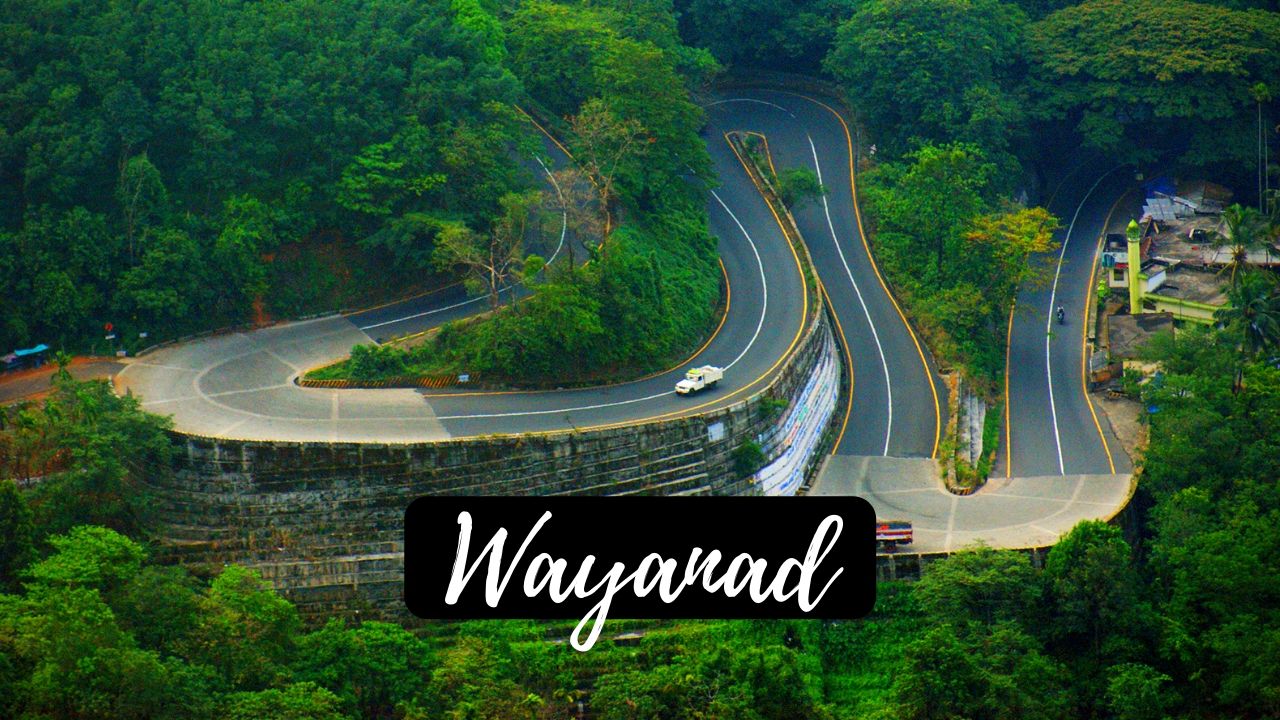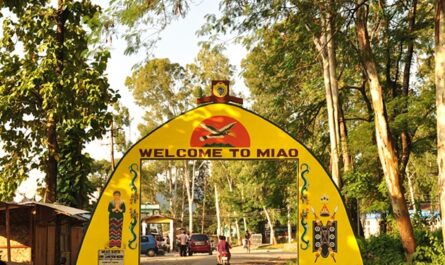Edakkal Caves
Place – Wayanad | State – Kerala | Country – India
Wayanad Tourism | Wayanad Tourist Places | Wayanad Travel Guide
About Wayanad: The Wayanad district is an Indian district, situated in the northeast of the state of Kerala. It is situated at high altitudes of 700 to 2100 meters in the Western Ghats. The district of Kozhikode and the districts of Kannur was established as the 12th district of Kerala on 1 November 1980. The area is under forest about 885.92 sq. km
Wayanad is bordered north and north-east by Karnataka, south-east by Tamil Nadu, southeast by Malappuram, southwest by Kozhikode and northwest by Kannur.

How to Reach Wayanad
By Air : The closest airport to Wayanad is Karipur International Airport in Kozhikode.
By Rail: Kozhikode, 110 km from the nearest train station. Kozhikode has good rail connections to major cities like Kochi, Chennai, and Bengaluru.
By Road : A network of good roads lead to Kerala, Tamil Nadu, and Karnataka from all three states in the region.
Tourist attractions in Wayanad
Religious sites
- Thirunelli Temple
- Puliyarmala
- The three Edakkal Caves
Nature sites
- Kolagapara Rock
- Bandipur National Park
- Wayanad Wildlife Sanctuary
- Banasura Sagar Dam
- Kayakkunn Ancient Stone Temple
- Soochipara Falls
- Lakkidi View Point
- Karalad Lake
- Philately and Numismatics Museum
- Meenmutty Falls
- Kanthanpara Falls
- Kurumbalakotta
- Chembra Peak
- Neelimala View Point
- Sunrise Valley
- Mango Orange
Historical sites
- The Wayanad Heritage Museum
- The Mahatma Gandhi Memorial Museum and Library
- The Anantnath Swami Temple
- Myladippara Trekking Centre
Places to Visit in Wayanad, Tourist Places in Wayanad, Sightseeing and Attractions in Wayanad
Edakkal Caves, Wayanad
Imagine stepping up to a cliff overlooking the stunning Western Ghats and descending a cellar nearly 8,000 years old of gravure?! This can be achieved in one of Kerala’s finest offbeat locations – the Edakkal caves in Wayanad. The caves are also a rugged sanctuary similar to the MP’s Bhimbetka shelters and are the only ones with stone age gravure dating back to 6,000 B.C. in Southern India. The ascent from the base to the cliff takes you on rocky paths which lead to a picturesque view. This is a lifelong experience!

How to get there: The cells are in the district of Nenmeni, Wayanad, approximately 25 km from Kalpetta, headquarters of the district. Kozhikode (Calicut) is 95 kilometers from the closest railway and airport.
Best time to visit: Year-round Two caves, which demonstrate the skill and philosophy of nature in architecture, is situated twenty five kilometers from Kalpetta. The groves at Ambukutty Mala are 1,200 m above sea level. Literally ‘Edakkal’ means ‘a pillar in the centre.’ Here is a cave formed by a heavy boulder lining in the wall.
The creation of Edakkal caves has many legends. One of the legends is the fact that the arrows of Lava, sons of Lord Sri Rama, are said to form these caves. Another is related to Chathan Kutti and Mudiampilly deity. Normal pilgrimages to this location in praise of the god were made by the local people.
The cave was noticed during his hunting trip to Wayanad in 1890, by Fred Fawcatt, then the police superintendent of the Malabar district. He found the Edakkal rock hut on the west side of Edakkalmala. He discovered this location to his surprise as Neolothic living quarters.
The caves of Edakkal are famed for the pictorial paintings (called caves of 6000 B C). To enter the caves you must walk through the Ambukutty of Mala. It takes about 45 minutes to ascend the mountain and in your journey to these historical caves, you will never be disappointed.
Two chambers are visible within the tunnel. The lower chamber has a length of 18 ft, 12 ft and 10 ft, and the upper chamber has a length of 96 feet, a width of 22 ft and 18 ft. On the walls of the caves you can see carvings of creatures, figures from animals and artifacts used by people. This sculptures provide great evidence of a highly civilized pre-historical culture. Archaeologists and historians worldwide have drawn considerable attention to Edakkal caves.
The only known location of Stone Age sculpture in India is the Edakkal. The sculptures of Neolithic and Mesolithic periods can be seen here. These cellars’ human figures are hair-raising and some have masks. They all have and are interesting archeologically. You can also watch Tamil and Brahmi Script on Edakkal cellars along with these pictorial sculptures.
The Indus Valley Civilization is currently related to by Edakkal. Around 400 hints of his connection to ancient civilization have been identified recently. The popular was a guy with a cup of jar.
The only known location of Stone Age sculpture in India is the Edakkal. The sculptures of Neolithic and Mesolithic periods can be seen here. These cellars’ human figures are hair-raising and some have masks. They all have and are interesting archeologically. You can also watch Tamil and Brahmi Script on Edakkal cellars along with these pictorial sculptures.
The Indus Valley Civilization is currently related to by Edakkal. Around 400 hints of his connection to ancient civilization have been identified recently. The popular was a guy with a cup of jar.
The Edakkal caves have historical and archaeological significance. Some of the carvings on these caves can be traced to the Neolithic era and the late Stone Age. Even the stonework in the interior goes back to around 5000 to 1000 BC.
These caves have been discuted by Fred Fawcett in 1890 and are one of the main tourist attractions in Wayanad. When he came on a hunting voyage, and found a stone axe in the coffee farm, Fred had a lot of interest in history and found some caves. During the Neolithic Celt, the stone axis which he discovered. Fred also crossed the dense woodland of Ambukuthy Mala. Later, this forest was revealed to be a house dated from the New Stone Age.
The two naturally occurring alcoves in the Kerala district of Wayanad are known for their excellent rock and wall gravures. The caves weigh massively 96 meters and 22 meters in length and width and lie at a height of 1200 metres. Due to the dangerous position you have to walk for 1 hour and a half (approximately 4000 ft.) to get to the cave entrance. It has statues dating back to neolithic times, the late Stone Ages. The Edakkal groves are historically and archaeologically important. It is believed that the stonework within the caves is as ancient as 5000 BC to 1000 BC.
Edikkal means ‘a between stone’ simply and explains its shape correctly. A smaller rock was wedged to form a natural cave between two larger ones. In the truest meaning of the term, the rock has a heavy boulder, which is not a basement but a natural crack. Therefore the cave has 2 floors. A tiny opening is possible to explore the first floor of the cave. Only across the street is a corridor leading to another gap on the roof, this time. This is the second level, which is much larger.
Visitors to the grotto have to go through unparalleled bricks, an iron leaf and fungi-covers. The walls have animal and human figure sculptures, many of them ambiguous but often simple. Owing to the length of the sculptures, the detail is more shocking.
Stay tuned on ChaloGhumane.com to get offbeat travel destinations where you want to visit.








